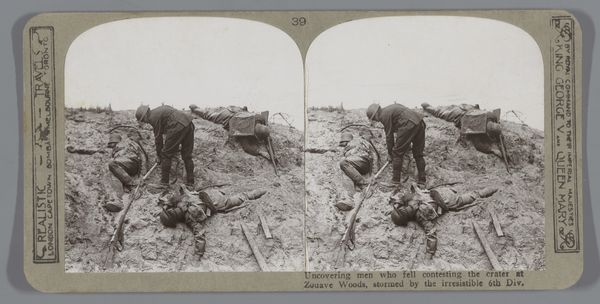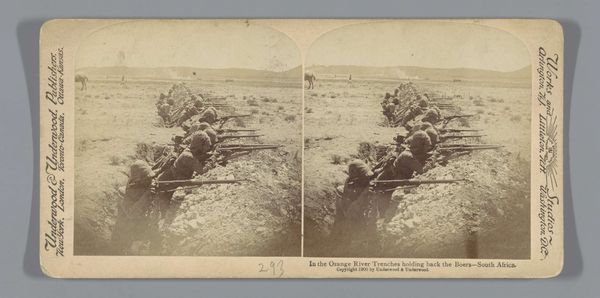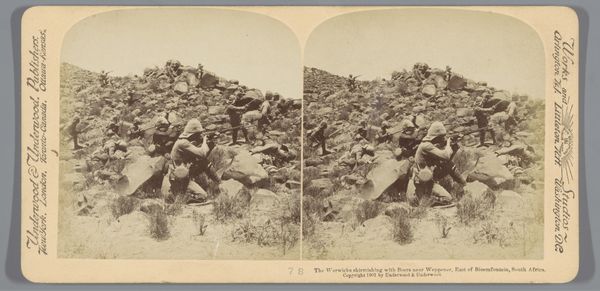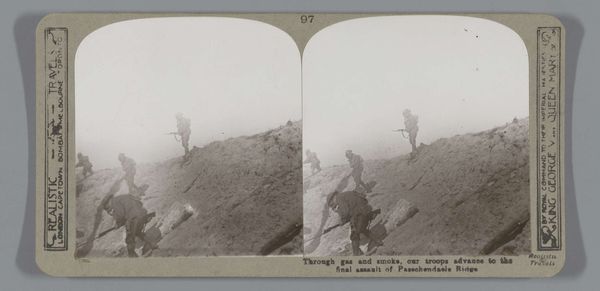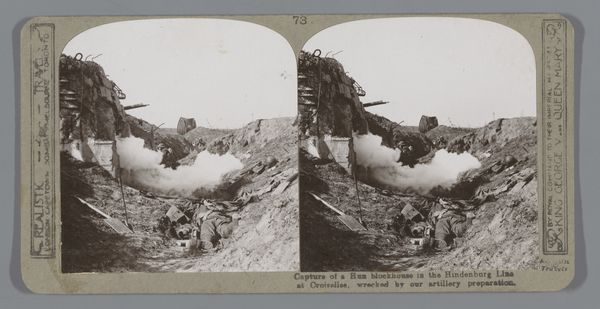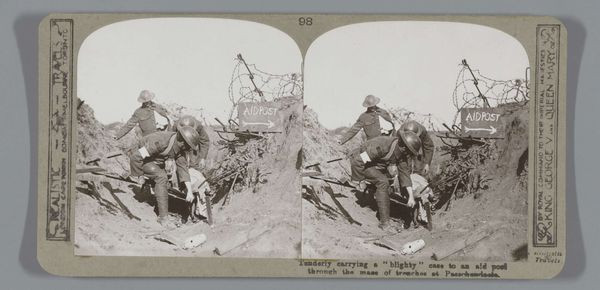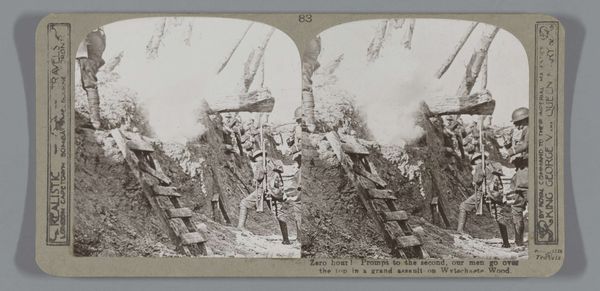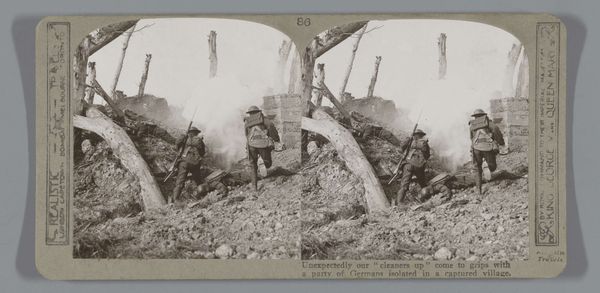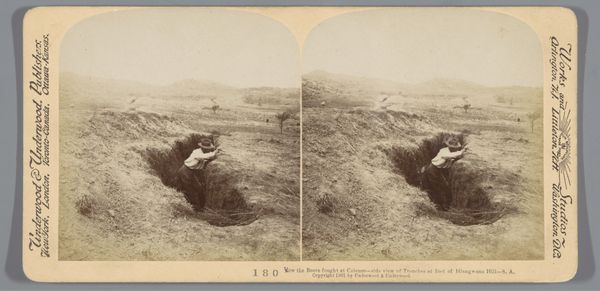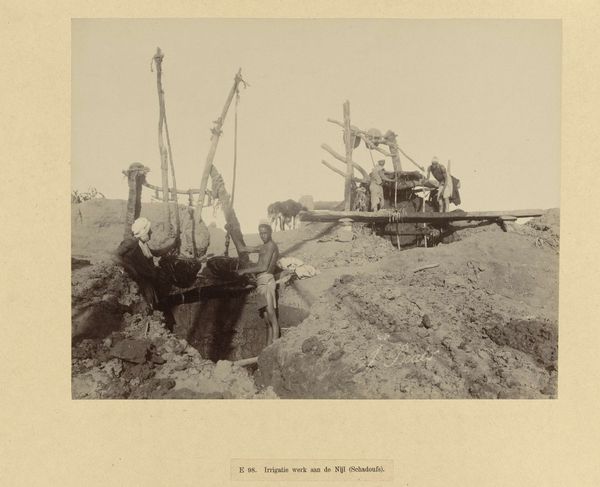
print, photography, gelatin-silver-print
# print
#
war
#
photography
#
coloured pencil
#
gelatin-silver-print
#
history-painting
#
watercolor
#
realism
Dimensions: height 85 mm, width 170 mm
Copyright: Rijks Museum: Open Domain
Curator: This gelatin-silver print by H. Schnaebeli, titled "German Cannon Aimed at Saint-Quentin During the Franco-Prussian War," dates back to 1870. It presents a seemingly straightforward depiction of warfare. Editor: My first thought is how deceptively still it feels for such a violent subject. The monochromatic palette lends a timeless, almost dreamlike quality, belying the devastating power it represents. The cannon looms like a menacing monster partially buried and held back for an upcoming devastating action. Curator: Precisely. The print exemplifies the rise of photography in documenting, and arguably shaping, public perception of war. Consider the material constraints: the gelatin-silver process allowed for mass production, facilitating the widespread dissemination of such images as both documentation and propaganda. Editor: And the cannon itself functions as a potent symbol. Throughout history, the cannon symbolizes destructive power, the might of empires, and technological advancement turned towards violent ends. It echoes similar powerful and violent symbolism from previous works, like those by Goya depicting scenes from the Napoleonic wars. It triggers those cultural memories of past violence. Curator: Indeed. Furthermore, the photograph presents us not with triumphant victory, but the grim labor of war. Look at the solitary figure digging; their mundane work contrasts sharply with the monumental, potentially lethal function of the cannon. The photographic process, requiring long exposures, also mirrors that drawn-out labor of war and perhaps even drawn-out agony it inflicted. Editor: Yes, even the composition reinforces that quiet anticipation before chaos erupts. The earthworks surrounding the cannon visually cradle and emphasize it, almost as if the land itself is pregnant with impending violence. The symbolism almost becomes internalized with an acceptance of what is about to happen, with both combatants seemingly playing their part towards what is seemingly inevitable. Curator: This image, mass-produced as it was, offered a specific, manufactured experience of war to consumers safely removed from the front lines, yet the labor inherent in the print's production, distribution, and consumption, highlights a shared experience nonetheless. Editor: Considering the long tradition of art used as historical documentation, this image offers insight into the shifting iconography of warfare at a specific moment in the 19th century, while touching on familiar themes about cultural values of nationhood, industrialization, and even sacrifice that reach back centuries.
Comments
No comments
Be the first to comment and join the conversation on the ultimate creative platform.

